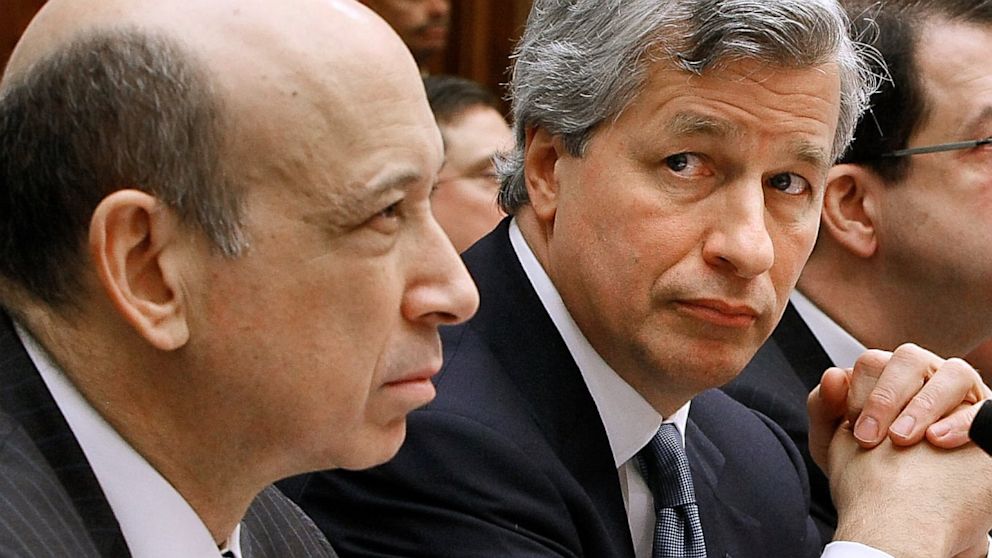Report IDs Worst-Performing, Highest-Paid CEOs
40 Percent of America's highest paid CEOs are doing a terrible job.

Sept. 2, 2013 -- For two decades close to 40 percent of the highest-paid CEOs in the U.S. have performed abysmally, a new report asserts.
These CEOs, according to the report, "ought to be exemplars of value-added performance," given the prevailing notion that executives earn their high pay by adding value to their companies and to the U.S. economy at large. "Our analysis reveals widespread poor performance."
Titled "Executive Excess 2013: Bailed Out, Booted, Busted," the study is a product of the Institute for Policy Studies (IPS), a left-leaning social policy think tank. Greenpeace and the AFL-CIO contributed to it editorially.
The report looks at 241 corporate chief executives who, over 20 years, have ranked among the 25 best-paid in the nation, as determined by the Wall St. Journal. It compares their pay to their performance.
Performance, the report notes, has traditionally been defined in terms of shareholder return. "We present a new, more dramatic performance yardstick," it says—one that takes into account which executives were fired and which led companies that either had to declare bankruptcy, were bailed out by the U.S. taxpayers, or had to pay fines as a result of fraud or other malfeasance.
The authors' conclusion: Of the 241 chief executives who got the highest pay, 38 percent performed badly.
Either they were "booted out" (8 percent), for example forced out by their boards; "busted" (8 percent), meaning their companies had to pay fines related to fraud or other lapses; or they "bailed out" (22 percent), meaning their firms either went out of business or had to be rescued by taxpayers as part of the 2008 financial crash.
One example: The former head of Lehman Brothers, Richard Fuld, ranked as one of the 25 best-paid CEOs for eight consecutive years, up to the moment Lehman passed out of existence in 2008 amid a pile of debt and accusations that are still being unraveled.
Steven Kaplan, professor of finance at the University of Chicago Booth School of Business, takes issue with the report's conclusions. First, he notes, "it comes from a very liberal think-tank, so I wonder if there is any bias there." Second, "There are always outliers." They get all the attention, he says, but they don't tell the true story.
"Third," he tells ABC, "The overall story is simple: Corporate profits--after all executive pay--are higher today as a fraction of GDP than they have been in the last 50 years. If all these CEOs were overpaid and not doing their jobs, how could that happen. In fact, CEOs and business are doing a terrific job generating profits. So, the average CEO, arguably, has done a terrific job."
Corporate profits he calls "a contributing factor in the recovery we are experiencing."
When it comes to fraud, Al Ehrbar, executive vice president of EVA Dimensions, a provider of equity research, asks: "How many congressmen go to prison? A lot more than CEOs of major corporations." He notes further that some of the CEOs cited in the report as having been forced out were, in his view, forced out wrongly. "Hank Greenberg at AIG? True, he was forced out by Spitzer. But some would say AIG ran into trouble because he was forced out."
Asked what struck her most about the report, one of its authors, Sarah Anderson, tells ABC News she was impressed by how little has changed in the past 20 years, in terms of CEO compensation.
"You'd have thought that after the financial crisis we'd have seen more change," she says, referring to the kind of compensation that rewards executives—especially those in finance--for taking risks. "After all, we had the president saying that it was risky speculation, in part, that had gotten us into that crisis."
She allows as how Congress did attempt to make meaningful reforms, via the Dodd-Frank Wall Street Reform and Consumer Protection Act. But today, she says, three years after the Act's passage, many of its provisions have not been implemented, including reforms prohibiting what she calls "inappropriate pay incentives for risk in financial firms." She attributes that delay to adroit lobbying by the financial industry.
Anderson finds it especially galling that some of the same CEOs who, she contends, helped precipitate the financial crisis by unsound risk-taking have now rejoined the "top-paid" club. As examples she points to Goldman Sachs CEO Lloyd Blankfein and JPMorgan Chase CEO Jamie Dimon. Both firms received government bailout money during the financial crisis.
Anderson finds most disturbing the "golden parachutes" given to CEOs when they either are booted from a company or otherwise compelled to leave.
Referring to the CEOs in the IPS study, she says of their exit packages: "The amount they each got, on average, we value at $48 million. On average! For the ordinary person who thinks he or she is lucky to get a small severance package, that's pretty stunning." Most such parachutes are part of a chief executive's compensation, negotiated at the time of hire. These arrangements, in her opinion, underscore how little real accountability there is at the top of corporate America.




